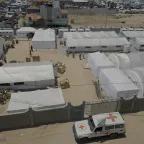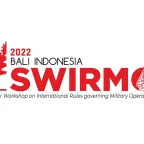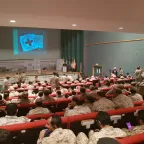Red Cross opens new 60-bed field hospital in Gaza
… 14-05-2024 Geneva (ICRC) – The International Committee of … humanitarian mandate that stems from the Geneva Conventions of 1949. It helps people around …
… 14-05-2024 Geneva (ICRC) – The International Committee of … humanitarian mandate that stems from the Geneva Conventions of 1949. It helps people around …

… Rights Council, United Nations Office at Geneva, Switzerland. Speech given by Mr. Peter … of the 1977 Additional Protocols of the Geneva Conventions in June. Negotiated and agreed in …
… Deprived of their Liberty, 27 April 2015, Geneva, Switzerland. Speech given by Mr Peter … conflict between two or more States. The four Geneva Conventions, for example, contain more than …
… do not exist in a lawless space. We have the Geneva Conventions, universally ratified, and their …

… to First Additional Protocol to the 1949 Geneva Conventions – that international humanitarian …

… documents is: June 17, 2024 at 12:00pm (Geneva time) . Should you have any questions … THE RED CROSS 19, avenue de la Paix CH-1202 Geneva Switzerland Tel: +41 22 730 27 20 … Humanitarian Law, notably the Geneva Conventions. Within the above mandates and …
… many of you – and your colleagues – both in Geneva and in capitals around the world. Since …

… the ICRC's mandates defined in the four 1949 Geneva Conventions is to promote knowledge of IHL …

… The ICRC is formally entrusted under the Geneva Conventions and their Additional Protocols …

… of States Parties to the Arms Trade Treaty in Geneva. On behalf of the International …
Try one of the following resources:
Created in 1863, the ICRC library, alongside the ICRC archives, provides an indispensable documentary reference on the organization itself and international humanitarian law.
International humanitarian law is based on a number of treaties, in particular the Geneva Conventions of 1949 and their Additional Protocols, and a series of other instruments.
Customary international humanitarian law consists of rules that come from "a general practice accepted as law" and that exist independent of treaty law.